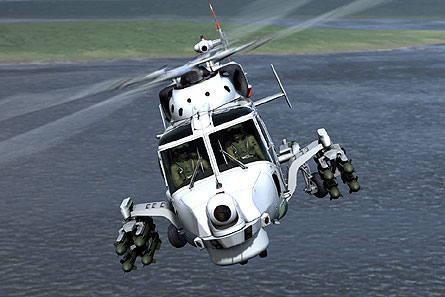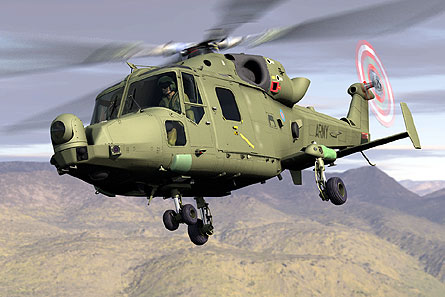By Murdo Morrison in Yeovil
The UK has formally awarded AgustaWestland the contract to supply 40 Future Lynx utility helicopters to the army and 30 to the Royal Navy, with an option for a further 10 aircraft split equally between the two services.
The deal is being announced today at AgustaWestland's Yeovil site by defence procurement minister Lord Drayson, and is the first to be awarded under the Strategic Partnering Agreement (SPA) between the manufacturer and the Ministry of Defence.
The SPA was promised in the govenment's Defence Industrial Strategy, published late last year, which committed the MoD to appoint preferred partners in certain sectors and technologies to ensure critical design engineering knowledge is retained in the UK to support future programmes.
First flight of the Future Lynx - which will incorporate improvements on the current Lynx included in the Super Lynx export version of the helicopter in service in Malaysia, Oman and South Africa - is scheduled for late 2009, with initial deliveries in 2011.
The army's battlefield light utility helicopter (BLUH) variant (an artist's impression of which is pictured below) will enter operational service in 2014 and a surface combatant maritime rotorcraft (SCMR) version for the navy in 2015.
|
|
|---|
The Future Lynx will be powered by two Honeywell/Rolls-Royce partnership Light Helicopter Turbine Engine Company CTS800-4 turboshaft engines, which deliver 36% more power than the current Lynx's Gem engines, says AgustaWestland. Fuel capacity is 50% greater.
The aircraft will be fitted with a range of equipment to enhance its survivability, including armoured crew seating, crashworthy passenger seating and an integrated defensive aids suite.

The Royal Navy SCMR version (pictured above) will retain the Sting Ray torpedoes from the current Lynx, and will be fitted with a new stores management system, carrier and launcher. This is in order to deploy a new missile or rocket system that will replace the Sea Skua as part of the future air-to-surface guided weapon programme.
The communications suite is based on the current model's Thales Avionics Secure Communications Control System.
The current Lynx entered service with the UK in the mid-1970s in anti-submarine and utility roles. Since then, it has taken on a wider range of missions, including anti-surface warfare, battlefield reconnaissance and casualty evacuation.
The decision to select Future Lynx was announced in April 2005.
Source: Flight International

















